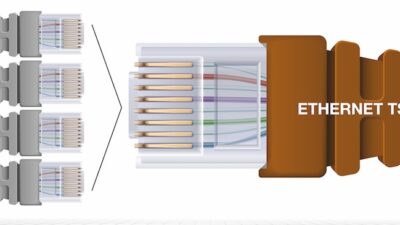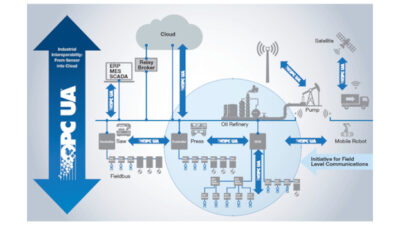Working overtime at their 1998 General Assembly, Fieldbus Foundation (FF) members took action March 5 on an array of milestone issues. Most of these related to controls and instrumentation end-users preparing to install FOUNDATION Fieldbus systems, according to John Pittman, president of the Fieldbus Foundation (Austin, Tex.
Working overtime at their 1998 General Assembly, Fieldbus Foundation (FF) members took action March 5 on an array of milestone issues. Most of these related to controls and instrumentation end-users preparing to install FOUNDATION Fieldbus systems, according to John Pittman, president of the Fieldbus Foundation (Austin, Tex.). The foundation expects many member suppliers to release Foundation-registered products and a number of major end-users to announce FOUNDATION Fieldbus installations during first-half 1998.
Other major foundation business at the assembly included: hearing application presentations by FOUNDATION Fieldbus end-users, such as Arco-Alaska, Daishowa America Corp., Sunoco Canada Ltd., and Syncrude Canada Ltd.; holding a panel discussion on end-user-related topics; viewing a table top exhibit of manufacturers’ products; and demonstrating a device configurator.
During the general assembly, FF members also incorporated 100 Mbit/sec Ethernet into their H2 fieldbus program, in direct response to end-users’ expressed needs and requirements.
Foundation officials add this program is intended to meet the market demand for a cost-effective, high-speed fieldbus solution for industrial and process automation, and will aid completion of a single, international, interoperable fieldbus standard. However, significant attention will be given to ensuring that all FOUNDATION Fieldbus H2 functionality is supported by the enhanced program. Development work will be funded and undertaken by Foundation members. FF plans to have draft specifications available for membership review by 3Q98.
Such functionality as configuration and maintenance, monitoring and control applications will be included in the Fast Ethernet program. The use of standard Ethernet hardware and software will be supported so that Ethernet-based hosts can interface with field devices and I/O subsystems. The program will enable Ethernet-based hosts to interface with FOUNDATION Fieldbus H1 devices through a linking device, and will permit devices on multiple H1 buses to communicate peer-to-peer or directly with the host. There are no changes to the Foundation’s H1 technology.
Function blocks and device description language (DDL), which are features of FOUNDATION Fieldbus, will provide added value when used in conjunction with Fast Ethernet. The ability to move control to the field, a capability of FOUNDATION Fieldbus technology, will also be enhanced.
IEC counts Brazilian DDL ballot
The foundation also announced on March 5 that the International Electrotechnical Commission (IEC) Committee of Action (Geneva, Switzerland) recently voted to count a disputed ballot by the Brazilian national committee in favor of the proposed fieldbus Data Link Layer (DLL) standard for IEC 61158. All IEC committee members supported the decision except Germany, which voted “no,” and one other country, which abstained. The DLL documents will now go to an FDIS (up-down) vote by the IEC Standards Committee and Working Group, with an opportunity for parallel voting in CENELEC.
Data Link Layer standards—DLL Services Part 3 (IEC 65C/178/CDV-IEC 61158-3) and DLL Protocol Part 4 (IEC 65C/179/CDV-IEC 61158-4)—are strongly supported by the foundation, the ISA SP50 standards committee, the British Standards Institute and other leading proponents of a single international, interoperable fieldbus.
The Foundation’s specifications comply with specifications approved by the IEC 65C fieldbus committee, and possess well over the required two-thirds vote by national standards committees. However, the ballot of the Brazilian committee was later disqualified by the IEC secretary general because it was not physically received at the IEC headquarters until after the Oct. 31, 1997, voting deadline. The Brazilian committee appealed this decision, arguing that since the IEC fax machine in Geneva was unable to receive their transmission, they followed the approved backup procedure and faxed their vote to the SC65C secretary in France prior to the close of voting.
Mr. Pittman says confirmation of the Brazilian vote is not only a victory for the great majority of IEC committee members who voted for the DLL standards, but also for the world’s end-user community. “Despite objections by those with vested interests in EN 50170, the IEC Committee of Action made the correct decision on behalf of the world’s measurement and control industry,” he says. “EN 50170 is a collection of three noninteroperable standards that only serves to protect the market share of certain European controls manufacturers. We’re hopeful the IEC will disregard the commercial interests of these companies, and vote in favor of a technically advanced, internationally supported fieldbus standard.”
Interoperability tester OK’d
FF also announced formal acceptance of the members-only version of the FOUNDATION Fieldbus Interoperability Test Kit (ITK). The ITK contains distinct parts developed for the foundation to test field devices for interoperability.
Developed by the Fraunhofer Institute (Karlsruhe, Germany) for interoperability testing of field devices based on the FOUNDATION Fieldbus specification, the test system consists of a test engine, a communication stack, and a function block interface card. The test engine executes test library functions (macros), as well as test cases which exercise the device under test.
Fraunhofer designed the interoperability tester to verify a unique aspect of FOUNDATION Fieldbus that makes device interoperability possible: standard function blocks. The tester includes a device description (DD) viewer that allows examination and verification of a device’s DD, another unique aspect of FOUNDATION Fieldbus. There is also a conformance test procedure for the physical layer.
“Acceptance of the interoperability tester opens the way for the testing and registration of suppliers’ FOUNDATION Fieldbus-compliant products,” adds Mr. Pittman. “This is a watershed event for the Fieldbus Foundation, its members, and the entire controls and instrumentation industry. A number of devices are currently in line for interoperability testing, and we intend to begin the product registration process as soon as possible.”
With registered interoperable products, users can choose the best device for a specific measurement or control function, regardless of manufacturer. For a device to pass interoperability testing, it must contain a foundation-registered communication “stack” that has passed conformance tests. Foundation-member suppliers who make reservations for interoperability testing will be given time slots based on a first-come, first-served basis. Members must perform the Physical Layer tests, FF-830, before submitting a device for testing.
Test beds established
To help users secure testing, FF further announced March 5 that it is establishing independent, multivendor “test beds” at several worldwide locations to be used for interoperability testing and stress analysis of suppliers’ FOUNDATION Fieldbus products. Test beds at FF’s laboratory in Austin, Tex., and at Sira Test & Certification Ltd. (Chislehurst, U.K.) will be operational by June 1998. A third test bed, to be located in Asia, will follow.
Kurt Zech, the foundation’s technical services manager, says the test beds will be useful for manufacturers who wish to verify interoperability of their devices when installed on a FOUNDATION Fieldbus segment with multiple host and field devices from other suppliers. In addition, device developers can use the facilities to perform tests to determine the extended performance parameters of fieldbus products.
For more information, www.controleng.com/info .


